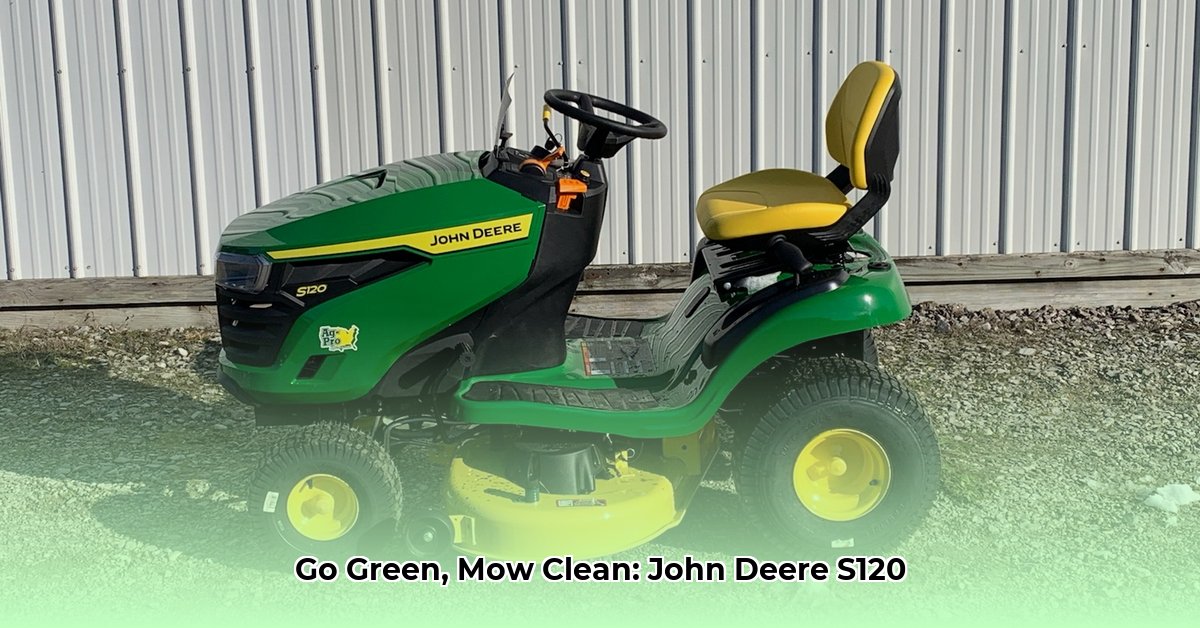
John Deere S120 Lawn Tractor: A Sustainable Solution?
The John Deere S120 lawn tractor presents a compelling case study in the intersection of power and sustainability. While not entirely emission-free, its design incorporates several features aimed at minimizing environmental impact. However, a complete assessment requires a balanced consideration of both its strengths and limitations. Is it truly "green"? Let's examine the evidence. For more on high-powered lawn tractors, check out this helpful resource.
Sustainability Features: A Closer Look
The S120's Easy Change™ oil filter system is a standout feature. This system allows for oil changes in approximately 30 seconds, significantly reducing waste oil and filter disposal. John Deere claims this translates to substantial waste reduction during production. This efficient system also encourages more frequent maintenance, leading to a longer lifespan for the tractor itself. Beyond this, the S120's robust construction using steel and cast iron contributes to its overall durability, minimizing the need for frequent replacements and resulting in less waste over the machine’s operational lifetime. The full-pressure lubrication system and durable cylinder liners further support this extended lifespan.
However, the S120's reliance on gasoline remains a significant drawback. While the overhead valve engine is designed for better fuel efficiency, precise fuel consumption and emission data are not readily available from John Deere. This lack of transparency hinders a complete evaluation of its environmental footprint. How much fuel does the S120 actually consume, and what is its carbon footprint? This crucial information is needed for a comprehensive assessment. This is a necessary area for improvement by the manufacturer.
Beyond the Home Lawn: Applications and Versatility
The S120's efficiency and ease of maintenance extend beyond residential lawns. Its capabilities make it suitable for smaller farms, parks, golf courses, and other settings requiring efficient mowing. Its user-friendly design also makes it accessible to a wide range of users. This versatility expands its potential for responsible land management across various applications.
Assessing the "Green" Factor: The Need for Transparency
While the S120's design features offer environmental benefits, a comprehensive analysis necessitates more data. Specific metrics on reduced emissions, operating hours, and lifecycle cost analysis are crucial for a truly accurate assessment. This information would quantify the machine's environmental impact, providing a clearer picture of its overall sustainability. Further research from independent sources would solidify the environmental claims.
The Verdict: A Balanced Perspective
The John Deere S120 represents a balanced approach. Its design elements promote sustainability, but its gasoline dependency presents a substantial limitation. It demonstrates potential for eco-conscious lawn care, but it isn't a complete solution. While a step in the right direction, it highlights the need for further advancements in environmentally friendly lawn care equipment.
Key Takeaways: Minimizing Environmental Impact
- Efficient Mowing Practices: Overlapping passes waste fuel. Strategic mowing patterns and sharply maintained blades are crucial for fuel-efficient operation. Regular maintenance ensures optimal engine performance.
- Fuel Management: Utilizing ethanol blends (where available) and responsible fuel storage practices minimize spillage and evaporation. Exploring alternative fuels, such as biofuels and electric power, represents a promising avenue for future development.
- Responsible Waste Disposal: Properly disposing of used oil and other maintenance byproducts prevents environmental contamination. Adherence to local regulations is essential.
The John Deere S120 provides a pathway toward more sustainable lawn care, but its success depends on responsible use and the continued development of environmentally friendly technologies. The journey towards truly green lawn care requires ongoing innovation and a collaborative effort from manufacturers, users, and regulatory bodies.